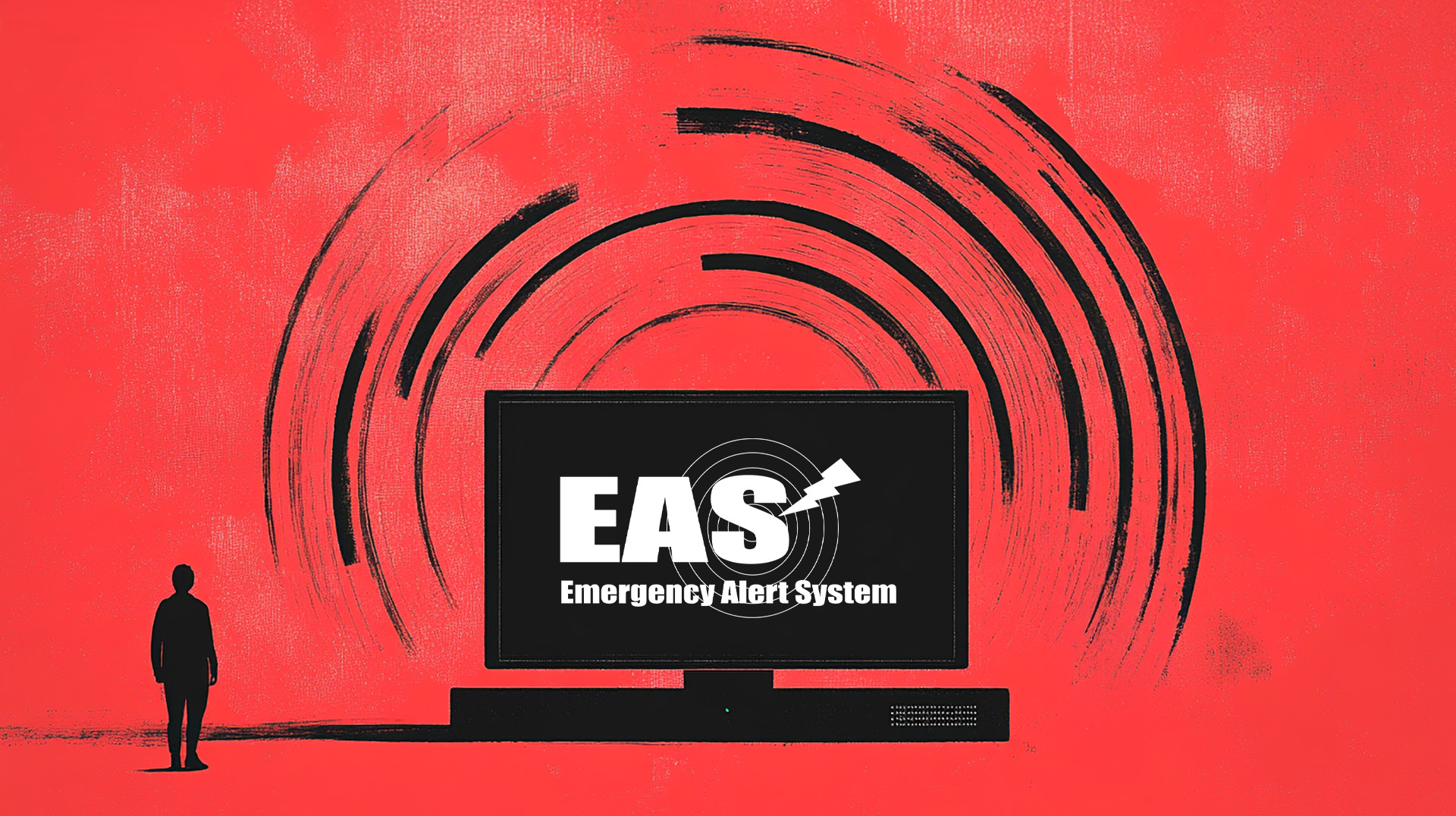FCC plans ‘ground up’ review of Emergency Alert System

Subscribe to NCS for the latest news, project case studies and product announcements in broadcast technology, creative design and engineering delivered to your inbox.
The Federal Communications Commission released details on July 17 of its sweeping plan to reexamine the nation’s emergency alerting infrastructure, questioning whether decades-old systems can effectively serve modern communication needs.
The Notice of Proposed Rulemaking, scheduled for consideration at the FCC’s August meeting, represents what commissioners describe as a fundamental review of both the Emergency Alert System and Wireless Emergency Alerts “from the ground up.”
The proceeding seeks to determine whether these systems require redesign to better leverage current technology while serving public safety objectives.
“Both systems were first introduced many years ago to address specific public needs using the technology that was available at the time,” the FCC stated in the notice. The Emergency Alert System has operated under essentially the same distribution architecture since 1994, while Wireless Emergency Alerts were designed for telecommunications networks that have since evolved significantly.
The commission’s inquiry extends beyond incremental improvements to examine core structural questions about alerting objectives, authorized senders, transmission capabilities and public reception methods. Officials indicated the review could lead to substantial changes in how emergency information reaches the public during crises.
Scope encompasses fundamental design questions
The proposed rulemaking explores whether alerting systems should guarantee message delivery to intended audiences or rely on “best effort” transmission attempts across multiple platforms. The commission seeks input on security measures needed to protect against cyberattacks that could generate false alerts or prevent legitimate warnings from reaching the public.
Geographic targeting capabilities also face scrutiny, with the FCC questioning whether current precision levels adequately serve alerting authorities while avoiding unnecessary “alert fatigue” among recipients who receive warnings outside their actual risk areas.
The notice examines expanding authorized alert originators beyond current government entities to include utility companies for immediate hazard notifications about power outages, gas leaks or water supply dangers. The commission also explores machine-to-machine alerting capabilities that could automatically trigger protective actions such as slowing trains or closing water valves.
Video messaging capabilities receive particular attention, with the FCC seeking cost estimates for implementing “video-rich” alert systems nationwide. The commission asks what technical steps broadcast and wireless providers would need to take to support video alerting within two years.
Platform reach concerns drive modernization push
The commission expressed concern that traditional alerting platforms may no longer effectively reach audiences as media consumption patterns shift toward streaming services, social media, and connected devices that cannot interrupt programming for emergency messages.
“This shift in consumer behavior indicates that fewer people may be using the platforms through which emergency messages have been traditionally issued,” the notice stated.
Radio and television broadcasts, cable services and certain satellite platforms currently carry Emergency Alert System messages, but streaming services reaching 40.3% of television usage as of June 2024 remain outside the system.
The FCC explores whether emergency alerts should focus more heavily on end-user device capabilities rather than transmission pathways, potentially allowing smart televisions, radios and other internet-connected devices to receive alerts directly from sources regardless of programming choices.
Such changes could enable greater customization for language preferences, accessibility options and display characteristics while potentially reducing regulatory burdens on current Emergency Alert System participants.
Industry transition pressures influence timing
The commission’s review comes as the emergency alerting industry faces significant supply chain pressures. The National Association of Broadcasters has petitioned the FCC to allow software-based alerting solutions after Sage Alerting Systems announced it would cease hardware production, citing difficulties obtaining legacy components.
Sage supplies approximately 90% of radio stations with emergency alert hardware, according to NAB materials. The company’s exit leaves Digital Alert Systems as the primary hardware vendor, potentially creating supply constraints as existing equipment ages.
However, the FCC’s notice does not address the transition to ATSC 3.0 or NextGen TV broadcasting, despite proponents repeatedly highlighting the standard’s enhanced alerting capabilities, including multimedia content, precise geographic targeting and multilingual support.
The omission suggests the commission may address next-generation broadcasting alerting features separately from this comprehensive review of existing systems.
Public safety performance data shapes inquiry
Federal Emergency Management Agency data indicates that alerting authorities have used the Integrated Public Alert and Warning System 4.86 million times since 2012, with more than 1,800 government entities at the federal, state, tribal, territorial, and local levels participating in the program.
The National Weather Service generates approximately 90% of Emergency Alert System activations, typically for short-duration weather warnings and watches. However, research cited in the notice found most Wireless Emergency Alert messages lack key information elements such as hazard descriptions, impact timeframes and specific protective actions.
The commission seeks input on whether alerting systems should require all messages to include these informational elements or whether such mandates would prove too inflexible for emergency situations requiring rapid public notification.
The commission framed its inquiry in regulatory language without quoting officials about specific reform intentions. Instead, the notice focuses on systematic evaluation of whether current systems effectively achieve public safety objectives given technological and behavioral changes since their implementation.
“As part of this examination, we seek comment on how EAS and WEA are working in practice for the public safety authorities who send alerts every day and the public that receives these alerts,” the commission stated in the procedural document.
The FCC will accept public comments for 30 days after the notice’s publication in the Federal Register, followed by a 45-day reply comment period. The commission has not indicated timeline expectations for completing the review or implementing any resulting changes.
The proceeding operates under “permit-but-disclose” rules requiring public filing of any presentations to commissioners or staff regarding the matters under consideration.
Comments may address cost implications for small entities, technical implementation challenges and alternative approaches to achieving alerting objectives while minimizing compliance burdens on system participants.
Subscribe to NCS for the latest news, project case studies and product announcements in broadcast technology, creative design and engineering delivered to your inbox.






tags
Digital Alert Systems, Emergency Alert System, FCC, NAB
categories
Broadcast Engineering, Featured, Policy